#Image Sensors Market
Explore tagged Tumblr posts
Text
According to the latest report by IMARC Group, titled “Image Sensors Market: Global Industry Trends, Share, Size, Growth, Opportunity and Forecast 2022-2027,” offers a comprehensive analysis of the industry, which comprises insights on the global image sensors market.
0 notes
Text
Neuromarketing: how brands are manipulating your brain?
A process called neuromarketing blends marketing with neuroscience. Also discusses how consumer behavior is impacted by the marketing system and how the human brain responds to it. It influences consumer behavior, feelings, and decision-making. It examines how the brain processes and reacts to marketing-related stimuli like branding, packaging, and product design. To learn how the brain reacts to various marketing stimuli, neuromarketing strategies can utilize eye tracking, biometric tests, and brain imaging instruments like fMRI and EEG.



#Neuromarketing:how brands are manipulating your brain#Neuromarketing#Importance of neuromarketing#What are the neuromarketing techniques#What are the objectives of neuromarketing#Functional Magnetic Resonance Imaging (fMRI)#Electroencephalogram (EEG)#Eye tracking#Biometric sensors#The Implicit Association Test (IAT)#Understanding consumer behavior#Improving product design#Enhancing brand perception#Increasing advertising effectiveness#Maximizing customer satisfaction#benefits of neuromarketing#marketing#neuro#what is neuromarketing#neuromarketing tips#neuromarketing reviews#neuromarketing summary
2 notes
·
View notes
Text
#Europe Agriculture Imaging Sensor Market#Europe Agriculture Imaging Sensor Industry#Europe Agriculture Imaging Sensor Market Report#Europe Agriculture Imaging Sensor Market Research#Agriculture#BIS Research#Europe Agriculture Imaging Sensor Market Analysis#Europe Agriculture Imaging Sensor Market Forecast
0 notes
Text
3D Camera Market - Forecast 2024-2030
3D Camera Market Overview
The Global 3D Camera Market is estimated to surpass $17.3 billion market by 2030 growing at an estimated CAGR of more than 12.6% during the forecast period 2024-2030. Surging demand of 3D enrich content from entertainment industry and enhancement in 3D scanning technology are proliferating the demand of 3D camera in the market. Consumer electronics hold the largest market share of 41% in the end-user segment and will be a major driver for market growth due to rise in acceptance of the 3D Camera technology. Moreover, the automated operations in industries such as food and beverages, chemicals etc. started integrating 3D cameras with robotics arms which will further fuel the market for 3D cameras in future. Owing to the increased demand of the photographers, nowadays, there has been an increase in adoption of the 3D camera. Additionally, there has been a discernible increase in the demand for high-quality cameras for smartphones or professional cameras, which is creating opportunities for the manufacturers to innovate 3D Camera as a new product in the market.
The 3D camera market is witnessing a trend towards enhanced imaging technologies, allowing for sharper and more detailed captures. Innovations in sensor capabilities and image processing contribute to the production of high-quality 3D content, catering to diverse applications ranging from entertainment to industrial use. A significant shift is observed towards miniaturization of 3D camera technology to meet the demands of mobile devices. Manufacturers are working on compact and efficient 3D camera solutions suitable for smartphones and tablets, unlocking new possibilities in augmented reality (AR) experiences, facial recognition, and immersive gaming.
Report Coverage
The report: “3D Camera Market– Forecast (2024-2030)”, by IndustryARC covers an in-depth analysis of the following segments of the 3D Camera Market. By Type: 3D laser scanning sensors, 3D fringe projection, 3D profile sensors, 3D stereo cameras and Others. By Product: Smartphones, Tablets, Professional Cameras, Hobbyist Cameras and Others. By Technology: Time of Flight, Stereo Vision and Structured Light. By application: Gaming, General Photography, Healthcare, Automotive, Industrial, Logistics, Security & Surveillance, Architecture & Engineering and Others. By Geography: North America (U.S, Canada, Mexico), South America (Brazil, Argentina, Chile, Colombia and others), Europe (Germany, UK, France, Italy, Netherlands, Spain, Russia and Others), APAC (China, Japan India, South Korea, Australia and Others), and RoW (Middle east and Africa).
Request Sample
Key Takeaways
Owing to the recent developments in the health care industry, 3D cameras have also penetrated into the healthcare sector. In 2023, LUCID Vision Labs launched the Helios 2 Ray Time of Flight 3D camera with a Sony DepthSense IMX556 sensor, 640 x 480 resolution, and 30 fps frame rate. Designed for indoor/outdoor use, it features a 69° x 51° FOV, supports Windows/Linux, uses 940 nm VCSEL laser diodes, is IP67 rated, and operates in -20°C to 50°C temperatures, making it ideal for diverse outdoor machine vision applications.
Emergence of 360 degree selfie camera is one of the pioneering discoveries for the upcoming advanced technology league. Most 360 cameras are launched for the purpose of capturing a complete image with particularly no dimensionality. It also provides virtual reality solutions and are also capable of recording more pixels and present a video which is high in resolution.
A high-tech system including 3D cameras could help UK farmers to recognize the early warning signs of tail biting in pigs. Tail biting is a health and welfare concern in affected pigs and a notable economic concern for industry, tail bite leads to reduce weight gain, culling and carcass condemnation. This technology is capable of predicting future victims and so offers opportunities to update and include information within our selection strategies to reduce the occurrence of tail-biting in future.
3D Camera Market Segment Analysis - By Technology
TOF and Stereo cameras have dominated the 3D Camera Market as compared to the other technologies. The Time-of-flight principle is used by 3D cameras to measure the distance between the sensor and the nearest surface point. The stereo camera is a type of 3D camera that is mainly used for making stereoviews, range imaging, and 3D photos for movies. The image sensors present in stereo cameras will allow cameras to simulate human binocular vision and captures the 3D photocopies. The low cost combined with their suitability for general photography and consumer applications drives the adoption of stereo and TOF cameras.
Inquiry Before Buying
3D Camera Market Segment Analysis - By Application
3D cameras are one of the most promising sectors for the healthcare industry. Third dimension is playing a progressively important role in image processing application. 3D Cameras offers great scope to healthcare industry and another milestone was reached by adding 3D technology to our camera portfolio. More detailed and realistic images are offered by 3D cameras as comparison to previous models. It also allows images to be routed in different aspects such as Digital Visual Interface (DVI) and High-Definition Serial Digital Interface (HD-SDI). 3D Cameras (HD) technologies benefits converted to wireless Communication as well. Results High-resolution and Minimal latency images, without restrictive cables. These growing applications will drive the adoption of 3D Cameras in Healthcare sector
3D Camera Market Segment Analysis - By Geography
Geographically, APAC has the most lucrative 3D camera market owing to the higher demand in the prominent consumer electronics market due to the presence of Samsung, Panasonic, Oppo, Xiaomi, and Vivo. Also, higher sales in the healthcare, construction, and automotive industries is influencing the 3D camera market by manifolds. Meere Company launched the next-gen Cube Eye 3D ToF camera lineup at CES 2022, featuring high precision, a compact design with an in-house ASIC chip for enhanced distance calculation, enabling touchless interaction, face recognition, eye tracking, and a future concept AR zone for virtual reality experiences in smart homes. Due to technological advancements in the region, APAC offered the maximum global market share of 37% in 2023. The rising smartphone production in the region combined with growing demand from the industrial sector will be the major drivers of the 3D Camera market in APAC region.
Schedule a Call
3D Camera Market Drivers
Rising Number of Applications in Entertainment
Due to a rapid increase in the demand for HD movies, games, and videos, it has become easier for the new entrants to enter the 3D camera market. The 3D camera market is primarily driven by enhanced visual applications in the entertainment industry. Owing to the implementation of 3D technologies in the camera, the entertainment industry is anticipated to grow worldwide. The latest camera used to shot a film in Hollywood was by Weta Digital, with DNEG, Framestore, and MPC providing spectacular future cityscapes. The success of 3D camera in filmmaking is spawning many filmmakers that are venturing into 3D films, and the future will observe an enhanced frequency of 3D films, which is creating a sustainable 3D camera marketplace.
Growing Usage in Automotive Market driven by Technological Advancement
In the automotive industry, innovation is expected to drive the adoption of 3D Camera market. 3D cameras are used as range cameras in cars to detect the position of the car on the road. Using these sensors in the system's driver is warned regarding the vehicle approaching from behind so that he can change the lane and also it detects the deviation from the lane and warns the driver by vibrating the seat. In 2023, Pickit3D and Zivid have joined forces to provide cutting-edge 3D vision solutions for the automotive industry, amalgamating Pickit3D's adaptable automation solutions and Zivid's top-tier 3D cameras. This strategic partnership targets increased efficiency, competitiveness, and widespread adoption of Industry 4.0 technologies, benefiting major players such as Hyundai, Kia, GKN, and Toyota. These developments will enhance the adoption of 3D Cameras in the ADAS and Safety Systems market for automotive sector. Additionally, the autonomous trucks and self-driven vehicles are gradually emerging in the automotive industry which will further catapult the demand for 3D cameras. 3D Cameras find prominent usage in autonomous vehicles for improving the drivability. Thus, they are an essential tool in furthering autonomous vehicle research and deployment. Thus, this will drive market growth of 3D Cameras.
3D Camera Market Challenges
High Cost of 3D Cameras
The major challenge for the growth of the 3D cameras market is regarding cost issues. Despite of its uses in various industries such as logistics, automotive, and gaming, However, existing industrial 3D solutions are often too complex and expensive for many "simple" 3D applications. 3D cameras are available in the market at a highly expensive, so they are acquiring demand from a very limited section of the market. Therefore, the sales of the market are less when compared to the other camera technologies such as 2D, primarily due to the cost factor despite the improved capability. Thus, the market for 3D Cameras will be largely limited to complex applications where 3D Cameras are a necessity rather than a feature. This will hinder the market in the short run, however; with the price of 3D Cameras dropping, the market will find significant adoption in the long term.
Buy Now
Market Landscape
Product launches, acquisitions, and R&D activities are key strategies adopted by players in the 3D Camera Market. Basler AG, Sick AG, Orbbec 3D Technology International, Inc., Panasonic Corporation, ifm electronic gmbh, Allied Vision Technologies GmbH, Vital Vision Technology Pte Ltd., Solomon Technology Corporation, Kandao Cognex Corporation are considered to be the key players of the 3D Camera Market.
Acquisitions/Technology Launches/Partnerships
In January 2023, Orbbec, a global leader in 3D camera technology, launched its advanced 3D sensor cameras, Gemini 2 and Astra 2, at CES 2023. Powered by the new MX6600 ASIC chip, these cameras offer a wide field of view, exceptional sensing range, and high-quality depth processing, introducing innovative possibilities in 3D across various industries, supported by an easy-to-use SDK and multicamera sync capabilities..
In April 2023, SICK has unveiled the safeVisionary2, a compact 3D time-of-flight camera with ISO 13849 safety certification, leveraging three-dimensional environmental perception to enhance safety and productivity across various manufacturing and logistics settings.
In July 2022, TKH Group N.V. has successfully acquired Nerian Vision GmbH, a pioneering stereo machine vision company based in Germany. This strategic acquisition allows TKH to integrate Nerian into its portfolio of machine vision companies, operating under the TKH Vision group, while Nerian retains its brand identity and ongoing partnerships.
#3D Camera Market#Image sensors#3D Camera Market size#Three-dimensional objects#3D Camera industry#3D sensors#3D Camera Market share#3D Camera Market top 10 companies#3D Camera Market report#3D Camera Market industry outlook
0 notes
Text
Image Sensor Market Is Projected To Grow At A CAGR of 9.02% By 2028
The increasing global image sensor market is driven by growth in consumer electronics, advancements in automotive applications during the forecast period 2024-2028.
According to TechSci Research report, “Global Image Sensor Market - Global Industry Size, Share, Trends, Opportunity, and Forecast 2018-2028, The Global Image Sensor Market is a dynamic and essential segment of the electronics industry, characterized by its remarkable growth and innovation. Image sensors are pivotal components that capture visual data in a myriad of devices, ranging from consumer electronics to automotive systems, healthcare devices, industrial machinery, and surveillance equipment. The market's dynamism can be attributed to several key drivers that fuel its expansion.
First and foremost, the ubiquitous presence of image sensors in consumer electronics, notably in smartphones and digital cameras, continues to be a driving force. The demand for higher image quality, greater pixel counts, and improved low-light performance remains relentless, compelling manufacturers to innovate and enhance their sensor technology.
The automotive industry is another major driver, as image sensors have become integral to Advanced Driver Assistance Systems (ADAS) and self-driving vehicles. These sensors facilitate functions like lane-keeping assistance, adaptive cruise control, and object detection, underpinning the automotive sector's transition toward safer and more autonomous driving.
Image sensors have also carved a significant niche in healthcare, with their use in medical imaging applications such as X-rays, ultrasounds, and endoscopy. They play a critical role in enabling precise diagnostic procedures and have improved patient care and outcomes.
Industrial automation and machine vision represent a rapidly growing segment where image sensors are indispensable for quality control, product inspection, and robotic guidance. These sensors contribute to increased efficiency and accuracy in manufacturing processes.
Moreover, the rise of the Internet of Things (IoT) and the demand for augmented and virtual reality (AR/VR) experiences have expanded the applications of image sensors. These sensors play a crucial role in creating immersive experiences and enabling real-time data capture in an interconnected world.
Continual advancements in image sensor technology, such as innovations in pixel size, image resolution, and low-light performance, further shape the market. Additionally, the constant quest for miniaturization, enhanced processing capabilities, and integration with other sensors to create multifunctional devices keeps the industry in a state of flux.
Browse over XX market data Figures spread through XX Pages and an in-depth TOC on the "Global Image Sensor Market."https://www.techsciresearch.com/report/global-image-sensor-market/2064.html
The global image sensor market is segmented into technology, processing type, application, and region. Based on technology, the market is segmented into CCD Sensor, CMOS Sensor. Based on processing type, the market is segmented into 2D, 3D. Based on application, the market is segmented into consumer electronics, automotive, healthcare, surveillance & security, others. Based on region, the market is further bifurcated into North America, Asia-Pacific, Europe, South America, Middle East & Africa.
Based on application, consumer electronic dominated in the global image sensor market in 2022. The ubiquitous use of smartphones, digital cameras, and camcorders is a pivotal driver of the Consumer Electronics segment. Image sensors are fundamental components in these devices, enabling consumers to capture high-quality photos and videos. The relentless demand for higher-resolution cameras, improved low-light performance, and enhanced image quality in consumer electronics perpetuates the importance of image sensors in this sector.
The surge in display technologies, such as high-definition televisions (HDTVs), 4K and 8K displays, and augmented reality/virtual reality (AR/VR) headsets, has catalyzed the need for advanced image sensors. These sensors support augmented and virtual reality experiences by providing clear and immersive visuals, making them indispensable in the consumer electronics sector.
The Internet of Things (IoT) revolution has spurred the production of a myriad of connected devices, including smart home appliances, wearables, and security cameras. Image sensors are integral to these IoT devices for applications like facial recognition, motion sensing, and surveillance. Their use enhances the functionality and user experience of these products, further extending the reach of the Consumer Electronics segment.
Gaming consoles and drones employ image sensors to offer interactive gaming experiences and precise navigation, respectively. Drones use image sensors for obstacle avoidance and capturing aerial images, while gaming consoles rely on these sensors for motion tracking and gesture recognition, providing gamers with an immersive gaming environment.
Key market players in the global Image Sensor market are: -
Sony Semiconductor Solutions Corporation
Samsung Electronics Co., Ltd.
OmniVision Technologies, Inc.
STMicroelectronics N.V.
GalaxyCore Shanghai Limited Corporation
ON Semiconductor Corporation
Panasonic Holdings Corporation
Canon Inc.
SK hynix Inc.
PixArt Imaging Inc.
Download Free Sample Report https://www.techsciresearch.com/sample-report.aspx?cid=2064
Customers can also request for 10% free customization on this report.
“The Global Image Sensor Market is a thriving and pivotal sector within the electronics industry. Image sensors, integral to an array of devices, capture visual data in applications spanning consumer electronics, automotive systems, healthcare devices, industrial automation, and security systems. This market is propelled by the continuous innovation in sensor technology, the expanding use of imaging in sectors such as healthcare and automotive, and the integration of sensors in emerging technologies, including augmented reality and the Internet of Things (IoT). As image sensors evolve to meet the demand for higher resolution, improved low-light performance, and innovative features, their influence on our visual data-driven world continues to grow.” said Mr. Karan Chechi, Research Director with TechSci Research, a research-based global management consulting firm.
“Image Sensor Market – Global Industry Size, Share, Trends, Opportunity, and Forecast, Segmented By Technology (CCD Sensor, CMOS Sensor), By Processing Type (2D, 3D), By Application (Consumer Electronics, Automotive, Healthcare, Surveillance & Security, Others), By Region, and By Competition, 2018-2028,” has evaluated the future growth potential of Global Image Sensor Marketand provides statistics & information on market size, structure, and future market growth. The report intends to provide cutting-edge market intelligence and help decision makers take sound investment decisions. Besides the report also identifies and analyzes the emerging trends along with essential drivers, challenges, and opportunities in Global Image Sensor Market.
Contact Us-
TechSci Research LLC
420 Lexington Avenue, Suite 300,
New York, United States- 10170
M: +13322586602
Email: [email protected]
Website: www.techsciresearch.com
#Image Sensor Market#Image Sensor Market Size#Image Sensor Market Share#Image Sensor Market Trends#Image Sensor Market Growth#Image Sensor Market Forecast
0 notes
Text
#Thermal Imaging Sensors Market Size#FLIR Thermal Binoculars Share#Best Thermal Binoculars News#Military Thermal Optics Trends#Thermal Imaging Devices#Infrared Binoculars Size
0 notes
Text
CMOS 3D Image Sensor Market

0 notes
Link
Image Sensor Market is Rapid industrialization and growing research and development activitie ...
#market research future#image sensor market#image sensor market trends#image sensor industry#image sensor market size
0 notes
Link
In 2028, the market for 3D sensors is expected to reach a staggering US$ 20.4 billion and grow at a CAGR of 17.5%. The 3D sensor aims at depth-sensing technology that augments camera capabilities for facial and object recognition and enhances the end-user experience.
0 notes
Text
3D Image Sensor Market - Forecast 2022-2027
The
3D Image Sensor Market
is estimated to surpass $3.7 billion mark by 2026 growing at an estimated CAGR of more than 14.2% during the forecast period 2021 to 2026. The significant rise in the demand for 3D Image Sensor in the medical imaging solutions are set to boost the market growth rate during the forecast period 2021-2026. Owing to their significant use in these devices as well as other consumer electronics owing to the provision of stereo vision and data acquisition, the growing adoption of smartphones and cameras is set to impact on the growth of the CMOS 3D Image Sensor Market. The automated operations in industries such as food and beverages, chemicals etc started integrating 3D cameras with robotics arms which will further fuel the market for 3D CMOS technology based image sensors in the future. Owing to the increased demand of the photographers, nowadays, there has been an increase in adoption of the 3D Image Sensor. Additionally, there has been a discernible increase in the demand for high-resolution capable image sensors for smartphones or professional cameras based on TOF or stereo vision, which is creating opportunities for the manufacturers to innovate 3D Image Sensor as a new product in the market.Surging demand of 3D enrich content from entertainment industry and enhancement in 3D scanning technology are proliferating the demand of 3D camera in the market. Consumer electronics hold the largest market share of 28% in the end-user segment and will be a major driver for market growth due to rise in acceptance of the 3D Image Sensor technology.
Report Coverage
The report:
“3D Image Sensor Market – Forecast (2021-2026)”
, by IndustryARC covers an in-depth analysis of the following segments of the 3D Image Sensor Market.
By Technology :
CMOS, CCD.
By Products:
Smartphones, tablets, professional cameras, hobbyist cameras, Machine Vision Cameras, Imaging Systems and Others.
By Camera Technology:
Time of flight, stereo vision, structured light, sheet of light triangulation.
By End Use Industry:
Media and Entertainment, Consumer Electronics, healthcare, automotive, industrial, logistics, security & surveillance, architecture & engineering and Others.
By Geography:
North America (U.S, Canada, Mexico), Europe(Germany, UK, France, Italy, Spain, Russia, Netherlands and Others), APAC(China, Japan India, SK, Australia, Indonesia, Malaysia and Others), South America(Brazil, Argentina, Chile, Colombia and others), and RoW (Middle east and Africa).
Request Sample
Key Takeaways
Consumer electronics sector holds the highest market share in 2020. This is majorly attributed to the applications of 3D Image Sensor in various devices such as mobiles, wearables and so on.
APAC is analysed to hold highest share in 2020 owing to the high presence of consumer electronics, automotive and medical manufacturing industries.
The rising demand for image sensors in the medical equipment such as surgical instruments is set to elevate the 3D Image Sensor market during the forecast period.
Emergence of 360 degree selfie camera is one of the pioneering discoveries for the upcoming advanced technology league. Most 360 cameras are launched for the purpose of capturing a complete image with particularly no dimensionality. It also provides virtual reality solutions and are also capable of recording more pixels and present a video which is high in resolution.
3D Image Sensor Market Segment Analysis - By Camera Technology
TOF and Stereo cameras have dominated the 3D Image Sensor as compared to the other technologies at 45.2% and 30.6% share in 2020 respecitvely. The Time-of-flight principle is used by 3D cameras to measure the distance between the sensor and the nearest surface point. The stereo camera is a type of 3D camera that is mainly used for making stereoviews, range imaging, and 3D photos for movies. The image sensors present in stereo cameras will allow cameras to simulate human binocular vision and captures the 3D photocopies. The low cost combined with their suitability for general photography and consumer applications drives the adoption of stereo and TOF cameras.
3D Image Sensor Market Segment Analysis - By End Use Industry
Consumer electronics is analysed to be the major shareholder in the 3D Image Sensor Market at 31.1% in 2020 owing to the wide spread applications of these in various devices. In order to increasing technological advancements, the provision of Augmented and virtual reality is integrated with 3D Image Sensor in the smartphones. In 2019, Apple has planned to release a smart phone with 3D Image Sensor in the rear camera o support AR based applications. More detailed and realistic images are offered by 3D Image Sensor based cameras as compared to previous models. It also allows images to be routed in different aspects such as Digital Visual Interface (DVI) and High-Definition Serial Digital Interface (HD-SDI).Adding to this, automotive industry is analysed to grow at a significant rate owing to the dire requirement of the 3D Image Sensor employment in the ADAS. In 2019, the government of India has mandated the features such as speed alert, reverse parking sensors, and others as standard for any vehicle. These regulations alongside the deployment of 3D Image Sensor in these technologies is set to boost the market during the forecast period 2021-2026.
Inquiry Before Buying
3D Image Sensor Market Segment Analysis - By Geography
APAC is analysed to be the dominant region in 2020 at 39.4%, followed by North America and Europe. This is mainly attributed to the vast research and developments activities in the region alongside the large infrastructural development. The presence of major players in the region is also contributing to the market share of the region. The growing demand and investments for self-driving cars that highly employ 3D Image Sensor in the region is also analysed to be key factor driving the market. Adding to this, APAC, the major shareholder in the automotive sector and the high deployment of the 3D Image Sensor in the advanced vehicle technologies is further impacting on the growth rate of the market. Moreover APAC is major hub for manufacturing of the consumer electronics such as mobile phones, computers alongside the penetration of the 3D technologies in various end users is set to escalate the market growth rate during the forecast period 2021-2026.
3D image Sensor Market Drivers
Growing demand for image sensors in the automobile
The increasing demand for automation in the automotive industries is set to certainly contribute to the growth of the market. The 3D Image Sensor are highly employed in ADAS systems in monitoring applications thereby impacting on the growth of the market. In February 2020, Continental AG, has announced to invest $110M to build a manufacturing plant in Texas, to manufacture and produce products for advanced driver assistance systems (ADAS). Therefore the significant usage of 3D Image Sensor in the ADAS systems alongside the growing investments is set to boost the market during the forecast period 2021-2026.Additionally, the autonomous trucks and self-driven vehicles are gradually emerging in the automotive industry which will further catapult the demand for 3D Image Sensor. 3D Image Sensor find prominent usage in autonomous vehicles for improving the drivability. Thus, they are an essential tool in furthering autonomous vehicle research and deployment. Thus, this will drive market growth of 3D Cameras.
Increasing demand for image sensors in the medical field:
The significant rise in the demand for image sensors in the surgical instruments is set boost the market growth rate during the forecast period. In June 2017, Omivision has launched OV6948, image sensor for wide range of applications, including dental, veterinary, forensic and so on. These image sensors overcome many challenges posed by reusable medical imaging equipment, including cross-contamination risks and inefficiencies due to high maintenance costs. Owing to these advantages, the growing demand for the miniature surgical equipment is set to boost the growth rate during the forecast period 2021-2026.
Buy Now
3D image Sensor Market Challenges
High Costs incurred in manufacturing
The manufacturing process of 3D Image Sensor involves high end machinery resulting in high manufacturing cost. Therefore the difficult manufacturing processes alongside the requirement of complex machinery is set to impact on the production of the 3D Image Sensor thereby hindering the growth of the market during the forecast period 2021-2026.
3D image Sensor Market Landscape
Product launches, acquisitions, and R&D activities are key strategies adopted by players in the 3D Image Sensor Market. 3D Image Sensor driver market is expected to be dominated by major companies such as OmniVision Technologies Inc., Aptina Imaging Corp., Samsung Semiconductor, Micron Technologies, Sony Semiconductor Corp., Hamamatsu, Avago Technologies, and Magna Chips among others.
Acquisitions/Technology Launches/Partnerships
In June 2019, Infenion has launched 3D Image Sensor solution for the mobile devices named the REAL3 IRS2381C. This image sensor offers a premium, stable, real-time 3D viewing experience that delivers outstanding performance irrespective of lighting conditions.
In July 2019, Leica Camera announced an alliance with Pmdtechnologies AG, to develop a depth-sensing camera using a 3D Image Sensor for smartphones. With the agreement, the two companies will work together to create a 3D-sensing camera for smartphones while reducing the size of the lens. Time-of-flight cameras are also said to have enhanced capabilities in facial ID, augmented reality, and even scanning 3D objects.
Related Reports
Image Sensors Market - Forecast(2021 - 2026)
Report Code: ESR 0023
3D Camera Market - Forecast(2021 - 2026)
Report Code: ESR 0096
For more Electronics Market reports, please click here
#3D image Sensor Market#3D image Sensor Market size#3D image Sensor Market share#3D image Sensor Market price
0 notes
Text
The Global Agriculture Imaging Sensor Market for agriculture was valued at $,1349.9 Million in 2023, and it is expected to grow at a CAGR of 15.10% during the forecast year (2023-2033) and reach $5,509.7 Million by 2033.
#Agriculture Imaging Sensor Market#Agriculture Imaging Sensor Market Report#Agriculture Imaging Sensor Industry#Agriculture Imaging Sensor Market Size#Agriculture Imaging Sensor Market Forecast#Agriculture Imaging Sensor Market CAGR#Agriculture Imaging Sensor Market Growth#Agriculture Imaging Sensor Market Research#Agriculture Imaging Sensor Industry Analysis
0 notes
Note
Recently I took a panorama of the Pittsburgh skyline at night that got a positive response. That was done on the spur of the moment with an iPhone. I want to do that again and more, but this time with a dedicated camera setup. It's been years since I've had one, so I'm basically starting over again. I'm mostly interested in getting day and night cityscapes, and maybe the carryings-on at this year's Anthrocon. Would you have any particular knowledge to pass on as I set off on this journey?
Since you didn't specify a budget I'm going to assume it is in the $10K range.
And you're probably thinking I'm going to suggest a Leica. Every dentist and his brother (who is also a dentist) gets a Leica. But I just can't take a camera brand seriously when they charge you an extra $2200 for the privilege of not being able to shoot in color.
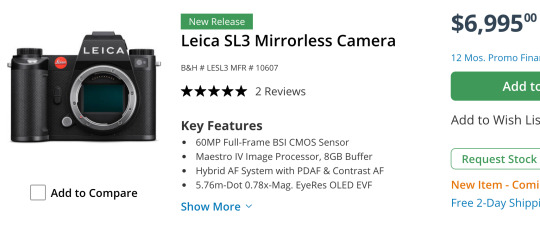
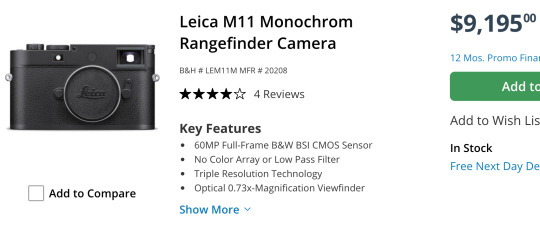
Sure, you can hit a single button in Lightroom to get B&W and save some money, but then you won't be able to brag about how limiting yourself to only shades of gray has opened up new artistic pathways in your brain while a clueless person responds in mumbles during their root canal.
What you really want for your landscapes is a Hassie.
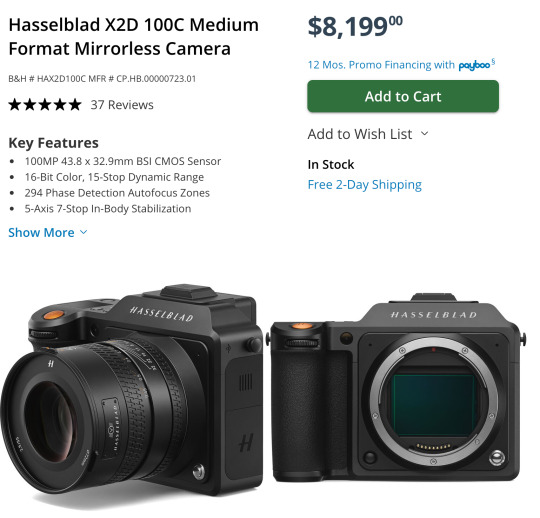
They were the first camera on the moon! How could you *not* want a Hasselblad? That is some camera gorgeousness right there. And it's so reasonably priced*!
*compared to their previous $40,000 camera systems.
And if you are doing landscapes with the Hassie you'll need a nice wide angle lens to go with it. This one is actually quite affordable*!
*compared to their previous $8000 lenses.
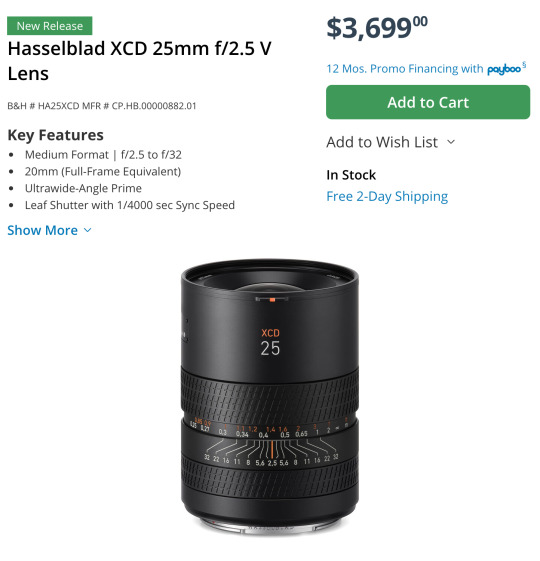
Can we all agree that is a work of art? They even use their H logo as the knurling.
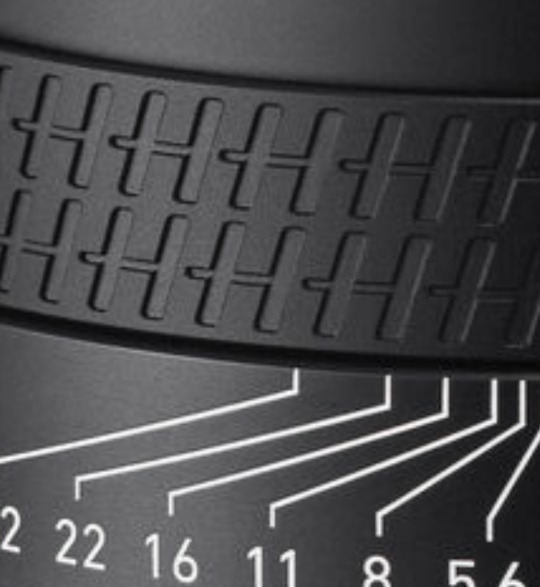
That is just so... extra. And I love it.
Out of the entire alphabet I've heard Hs give you the best grip.
Man, I almost wish I was a dentist just so I could buy a fancy camera.
Sorry... I was just having a little fun.
I never get to recommend the super cool expensive cameras. Because, ya know, the economy and the fact that only dentists have Hasselblad money.
You probably think I'm being silly but there actually is an entire community of dentist photographers keeping the high end camera market alive.
Okay, let's get started...
Landscape Buying Guide
Opening Thoughts
For landscapes I would highly suggest a full frame camera and a high quality wide angle lens.
Full frame has several advantages but it is not necessary. You can go with a smaller sensor like APS-C and get great images. Personally I would not go any smaller, but there have been some great landscapes taken on micro 4/3 and even smartphones. Technique, knowledge, experience, and composition will usually win the day over a camera, but having a nice camera makes things a lot easier.
At this point, with full frame options being very affordable now, the main reason to get a smaller sensor is if you want a smaller system that is easier to carry for extended periods and easier to pack when traveling. Or if you aren't sure you want to take on photography as a hobby, you can get an old APS-C DSLR for under $200 to learn with and test out.
So if you need a very cheap OR very compact system, APS-C and Micro 4/3 might be worth considering, but a bigger sensor will cause less frustration most of the time.
Froggie Note: The expensive Micro 4/3 and APS-C systems are the compact ones. The cheap systems are about as bulky as full frame.
The biggest advantages to full frame are low light shooting, lens selection, and field of view. Full frame cameras have many, many more lenses to choose from. And since the sensor is bigger, it is much easier to get a wider field of view that is often needed for landscapes. And the high ISO noise performance tends to be better on full frame.
However, you can use full frame lenses on APS-C camera bodies within the same ecosystem. They just get a little... zoomier. Roughly 1.5x zoomier. A 35mm acts like a 50mm, for example. So if you want to spend a little less now you can get an APS-C camera with a full frame lens and then upgrade to full frame later on without having to buy a new lens. Full frame lenses work on APS-C bodies but not the other way around.
Most landscapists have a really solid 16-35mm lens and that covers almost all of their needs. So I would suggest something comparable. Please don't get suckered into some crazy 18-300mm superzoom. Just get the focal range you need for the photos you want to achieve.
A purpose-built lens always outperforms one that was made to do everything.
As far as where to get used gear, I highly recommend using KEH or MPB when buying used camera bodies. They check every device and offer between 3 and 6 months warranty to make sure the device won't crap out on you. Lenses are typically a lot more robust and a safer thing to buy on eBay or Facebook Marketplace if you can find a better deal. But the security of having a warranty and a return apparatus if something goes wrong might be worth the extra price when using these two sites.
I am going to recommend Canon, Nikon, and Sony systems. I feel they have the most complete ecosystems with gear that spans all budget ranges. I'm not saying there aren't good cameras from other brands, but you have to remember every camera has an ecosystem surrounding it. There are accessories and upgrade paths and niche lenses that may not be available with other brands. I think Fuji has some tempting options and if you like the look of vintage film photography, their emulation options are quite stunning. Their cameras are also quite attractive and have very satisfying knobs. But I still can't recommend them unless you have a specific reason for wanting their gear.
Just remember that for every Canon DSLR I recommend there is a comparable Nikon option available as well. There are more lenses for a Canon full frame DSLR body than any other brand with Nikon coming in a close second.
So if you choose not to go mirrorless yet, the Canon and Nikon DSLR camera ecosystems are immense and have tons of gear and accessories available to go with them. And since used gear holds up really well, those ecosystems will survive for decades.
Should you buy a mirrorless camera or a DSLR?
Mirrorless cameras are the latest camera technology for interchangeable lens camera systems. At this point they are superior in every aspect and they continue to improve year by year. Because of that, used DSLRs have plummeted in price. This allows people greater access to a starter ILC (interchangeable lens camera) without a significant investment. You can get professional quality images on either format, but mirrorless has a shallower learning curve and much better automatic modes.
The in-body image stabilization (IBIS) stabilizes *every* lens and the eye tracking autofocus make "focus and re-compose" extinct. These are huge selling points for a lot of people. With IBIS you can take photos with up to 2-4 second shutter speeds without a tripod. And never missing focus on a human or animal or bird is pretty cool too.
DSLR camera bodies are no longer being designed by most of the major manufacturers. Thankfully Canon and Nikon developed plenty of bodies and lenses, so you will always have options and upgrade paths. But you will not be able to upgrade to systems with the latest advanced features.
The best DSLRs available are probably the Nikon D850 and the Canon 5D Mark IV. That is as good as it will ever get. The technology ends there. So if you want to enter an active camera ecosystem then you will have to get a mirrorless camera.
DSLR Camera Systems
Full Frame DSLR Camera Bodies
Canon
If you buy a used DSLR, there are some very affordable full frame options. In fact, the classic much-praised budget full frame Canon 6D can be had for under $300 right now.
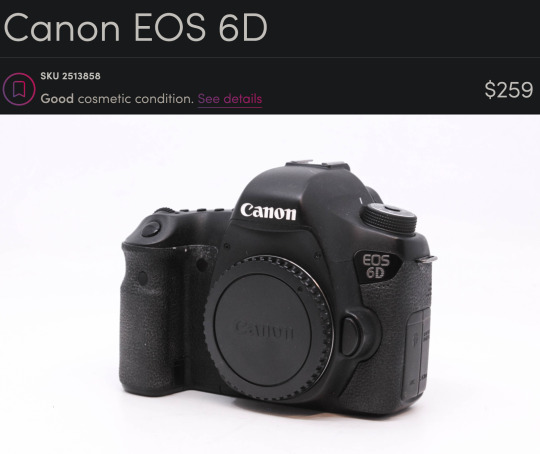
This is an old camera. It has no fancy features. It only has 20 megapixels. It just does what it says on the tin. But it has a big sensor and a *ton* of really cool lenses available for it.
If you are specifically looking to create really high resolution panos, you could also look at the 50 megapixel 5DS R for around $1000.
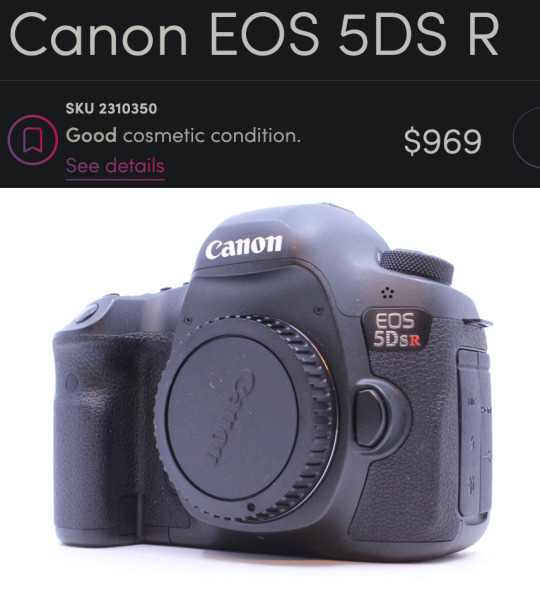
There is a community of landscape pano-maniacs that love to create "gigapans" that have endless amounts of detail where you can zoom in and find new details in every photo. I was only able to create a 120 megapixel photo, but you can still find things like people starting a campfire and a dude fishing and a truck on a far off bridge. So even though this seems expensive for a DSLR, you are looking at another thousand bucks to find anything with more megapixels than this bad boy, so it is quite a good deal relatively speaking.
Nikon
Probably the best DSLRs ever made were the Nikon D800 series and you can get the Nikon D800 for $464.
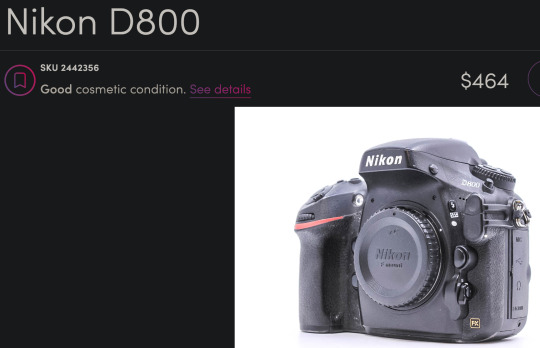
This is a newer camera than the 6D with more megapixels (36) and a better sensor. It also has a more modern autofocus system and about 3 more stops of dynamic range which can come in handy for landscapes. This is an incredible camera for this price.
APS-C DSLR Camera Bodies
If you aren't sure you want to commit to this hobby, you can look into a Canon APS-C sensor body like the Canon Rebels and Canon 60D through 90D models and get good results.
And there are many Nikon DX APS-C bodies that would be great starter cameras as well. If you get a Nikon, you'd have an upgrade path to the D800 if you get hooked by the photography bug. I would miss a few very special Canon lenses like the 100mm f/2.8L macro and the 400mm f/5.6 telephoto but I'm sure I could figure out some reasonable Nikon alternatives that would do roughly the same thing.
Canon APS-C
There is a Canon 60D for $139 right now that would be perfectly adequate for landscape work on a tripod.
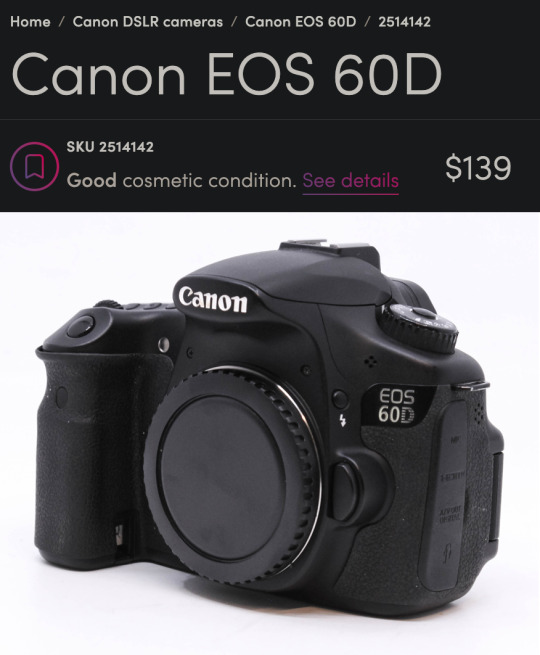
That was my first camera and I took some very nice photos with it. Only 18 megapixels but it has a very convenient flippy screen which was really helpful for a disabled photographer trying to get low angles.
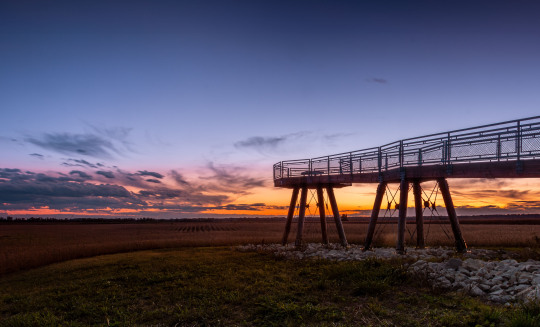
This was in 2014 and I didn't know what I was doing but that is a pretty stellar-looking sunset for a (now) $140 camera.
Nikon APS-C
And the Nikon D3400 would be a great option as well at around $184.
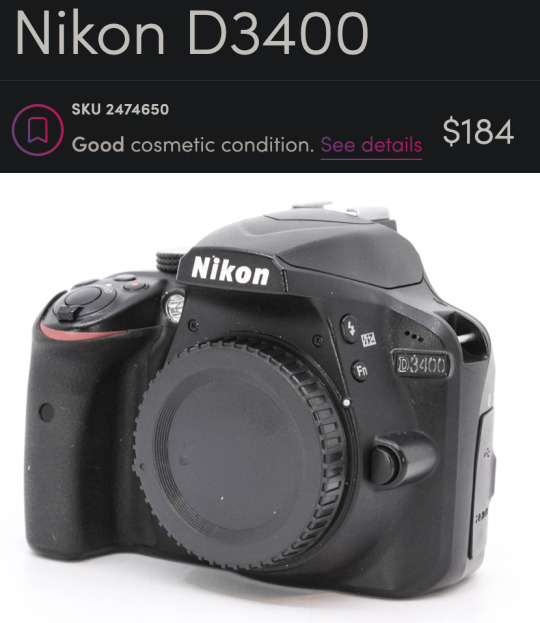
You get some extra megapixels (24) and it is a bit newer than the Canon. I get the sense that used Nikon DSLRs give you more value for your money right now but I don't have a large enough sample size to confirm that.
Full Frame DSLR Lenses
Froggie Note: I am recommending full frame lenses even if you choose an APS-C DSLR body so you have an upgrade path. But also very few purpose-built APS-C lenses had superior glass. Just remember, crop sensor APS-C cameras add ~1.5x to your focal length. So a 16-35mm will have the equivalent field of view of a 24-50mm lens. Still quite acceptable for landscapes, but you may benefit from doing panoramas more often. And if you upgrade to full frame down the road, you'll already have the ideal lens.
Canon DSLR Lenses
If you get the 6D or another Canon you could pair it with the beloved-by-landscapists Canon 16-35mm f/4L.
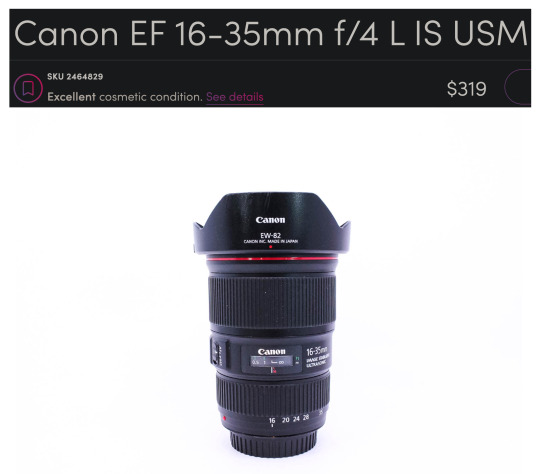
Honestly, it is blowing my mind you can get that combo for under $600. Me from 12 years ago is super jealous right now.
If you are worried you might need something to work in lower light and still want a zoom, the f/2.8L starts at around $434.

This might be the most famous landscape lens of all time. Kinda boggles the mind how many gorgeous vistas this thing has captured the light of.
If you can live without the zoom, you could get a much sharper prime lens that can also be used in even lower light. A used Sigma 24mm f/1.4 Art lens is $439 would be a fantastic option.

24mm is still a very good focal length for landscapes and the sharpness of this lens lends well to panoramic stitches. Seriously, these art lens are so freaking sharp. Although 35mm is typically preferred for most street photography, I think this would do great for that purpose as well. It couldn't do close up portraits, but 3/4 and full body portraits would look great. I also love this focal length for doggos. It enlarges their heads a bit which enhances adorable-ness.
Though I probably wouldn't recommend the 24mm on APS-C for landscapes as it would put you near a 40mm full frame equivalent field of view.
Nikon DSLR Lenses
And on the Nikon side of things you could get the Nikkor 16-35mm f/4 for $399.
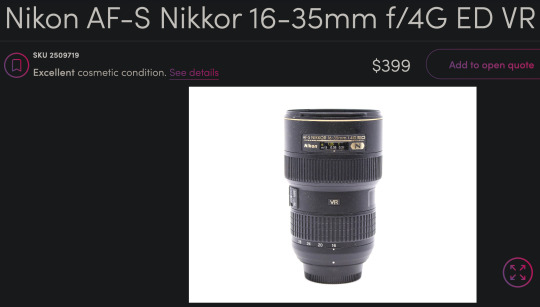
This is a great lens too. Very comparable to the Canon L glass. And paired with that D800 you would have a better shooting experience than with the 6D if it fits within your budget.
It's a little harder to find, but you can also get that same Sigma 24mm f/1.4 Art lens for Nikon at around $528 used on Amazon and in the $400 range on KEH and MPB when it is available.
The older and softer Nikkor 28mm f/1.8 is a little more affordable and easier to find.
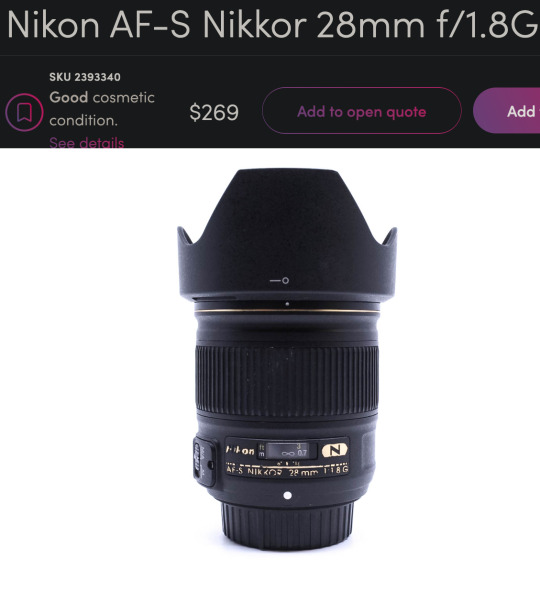
What if you are not a dentist but are willing to save up for something a little nicer?
Enter the world of...
Mirrorless Camera Systems
Sony currently has my favorite ecosystem of mirrorless cameras and lenses and they are consistently ahead of the other brands as far as technology and features. In fact, many other manufacturers use Sony sensors. They literally supply their competition with their own tech. They are also pretty good about updating firmware—even with older models. So I feel like Sony has a lot of future-proofing advantages over other brands. Sony has a great selection of 3rd party lenses like Sigma, Tamron, Viltrox, Laowa, Samyang, etc. These lenses often have nearly the same optical quality as Sony's G Master lenses at a fraction of the price.
Full Frame Mirrorless
Currently, I think the best value full frame mirrorless camera for landscapes would be the Sony a7R III.
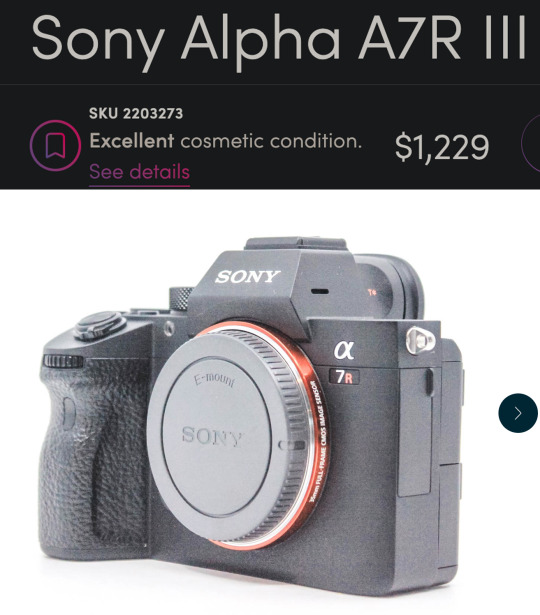
This is very nearly a top-of-the-line landscape camera for a little over $1200.
That might sound like a lot, but I want to be clear...
This isn't just decent. This isn't "good enough." This is a spectacular professional grade full frame camera.
10 years ago you could spend $6500 for a *worse* camera. 5 years ago you could spend $3000 for a *worse* camera.
It can do every genre of photography except for maybe fast paced sports/action. It has an amazing 42 megapixels—which are not necessary but they do make editing and printing a lot less of a headache. The file sizes can get a little big, but storage is a lot cheaper than it used to be.
Oh, and it can be used for professional quality 4K video work too.
The a7R III comes with all of the modern bells and whistles including in-body stabilization (IBIS) so you can handhold at very slow shutter speeds. It has one of the best autofocus systems—complete with eye tracking. But not just human eyes! Dog eyes. Cat eyes. Bird eyes. If it has an eye, the Sony can probably lock focus on it. And it has an admirable 10 fps burst shooting mode.
APS-C Mirrorless
If you want to enter the Sony ecosystem but can't afford full frame quite yet, you could do the a6400 for about $600.
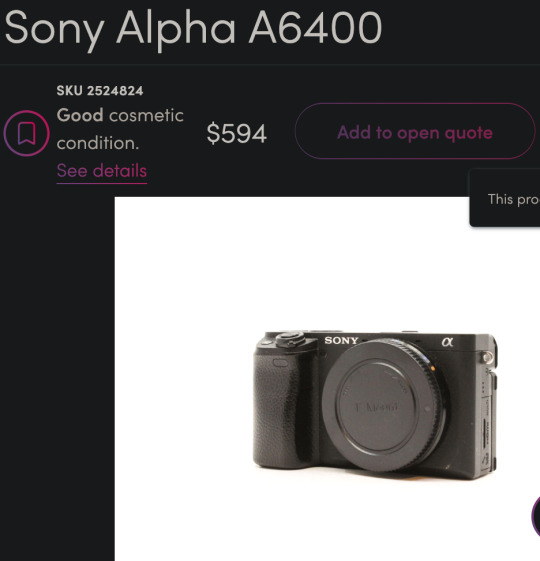
You still get the eye-tracking and the in-body stabilization, but you will lose some image quality at higher ISOs due to the smaller sensor size. However, you can get the same full frame E-mount lenses for it and upgrade to a bigger sensor later on and not have to buy new lenses.
Mirrorless Landscape Lenses
I think a good value landscape lens would be the very impressive Tamron 20-40mm f/2.8.
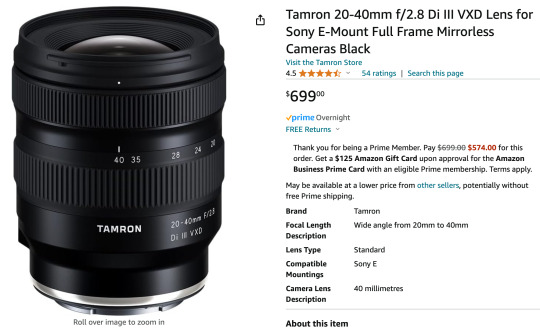
This is a newer lens so there aren't many deals on used options yet. But this is still a great price for the quality and versatility you get. You will never regret spending a little more on glass.
The 20mm range can fit an entire cityscape in the frame without needing to do a panorama. But if you zoom to 40mm and mount the camera vertically, you could stitch together several photos to get well over the 100 megapixel range.
Also, the 40mm focal range is long enough to do street photography and even head & shoulder portraits. The wide f/2.8 aperture combined with the high-ISO friendly full frame sensor and in-body stabilization means you can shoot in very low light without a tripod. You can also get some great pictures of stars if you travel to someplace with minimal light pollution.
The cheapest landscape zoom lens I could find was the Sony 16-35mm f/4 at $384.
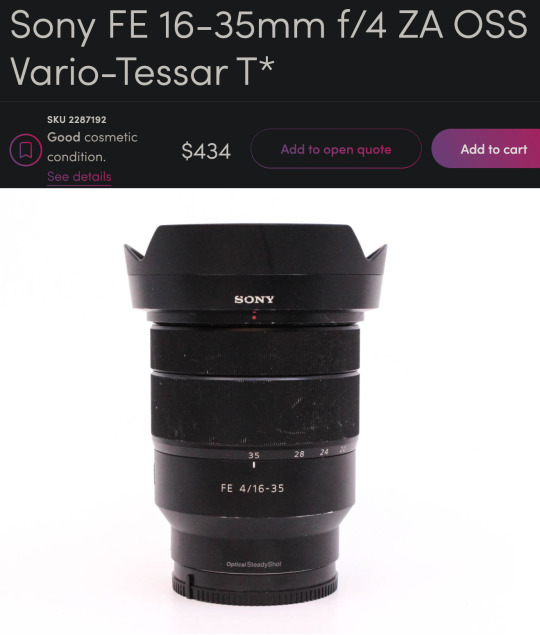
It's one of Sony's older lenses and may not take advantage of all of the a7R III's pixels, but it would be a good option to get you started in this system and upgrade the lens later on.
Mirrorless Prime Lenses
Zoom lenses are great but you have to spend more to get tolerable quality. Kit zooms can be softer than even the tiny plastic lenses on your phone. So a great way to stretch your budget is to get multiple fixed focal length "prime" lenses. Primes can be built inexpensively while still having good low light performance and decent sharpness.
For instance, you could start with something like the Tamron 20mm f/2.8 for $175. And if you want to do more than landscapes you could add the Sony 50mm f/1.8 for $170 later on. Cheap primes will outperform any of those mediocre kit zoom lenses in that same price range. You lose some versatility and have to deal with the pain of changing lenses or zooming with your feet, but sometimes a tight budget demands a little pain.
There is also a higher quality 3rd party wide angle prime lens that is very popular right now. The Viltrox 16mm f/1.8 is only $549 and the reviews say it has similar quality to lenses 3 times its price.
If you have to choose between a better camera body or a better lens, a good lens will help your photos more than a fancy camera body.
Froggie Note: These are examples. You should always do your own research before making a major technological purchase. This post could be a year old by the time you see it and there could be new stuff that is better. But all of the principles I tried to convey should hopefully guide you to a good decision. Also, feel free to message me if you want to ask about specific gear you are considering purchasing.
More Resources
This is my Encyclopedia of Lens Terms which is a helpful primer in understanding all of the wonderful and different lens options available on ILCs.
This is my buying guide for low budget used DSLRs. Similar to this post but less geared toward landscapes.
And this guide for getting decent landscape photos with any camera.
This is a free tutorial that teaches you everything you need to get started with an ILC system.
youtube
And this free tutorial by Karl Taylor is quite good as well.
70 notes
·
View notes
Text
Elon Musk may have put the final nail in X’s coffin. On Wednesday, Musk appeared to endorse an antisemitic post by user @breakingbaht alleging that “Jewish communities have been pushing the exact kind of dialectical hatred against whites that they claim to want people to stop using against them.” In response, Musk posted, “You have spoken the actual truth.”
The original post seemed to echo the beliefs of the “great replacement” conspiracy theory, which is popular among white supremacists and right-wing extremists. The backlash has been swift. In a statement earlier today, White House spokesperson Andrew Bates condemned the “abhorrent promotion of antisemitic and racist hate in the strongest terms, which runs against our core values as Americans,” and marquee advertisers have been quick to pull their business. IBM, Disney, Liongsgate, and the European Union have pulled advertising from X in response to Musk’s post. According to a report in Axios, Apple has also paused advertising on X.
At the time of publication, Apple had not responded to multiple requests for comment, nor has it confirmed that it is pulling its advertising from X.
“Advertisers like IBM and Apple aren’t just big names, they’re big spenders on X,” says Angelo Carusone, president of Media Matters, a media watchdog group which has been tracking advertiser behavior on X. Carusone, citing data shared by data insights firm Sensor Tower, says that in July, the top five advertisers on X by spending were Apple, FinanceBuzz.io, Amazon, Mondelez International, and Hewlett-Packard. In the past, Apple has frequently been among the top 20 advertisers on X.
Carusone adds that Apple typically signals a certain level of brand safety to other, smaller advertisers. The company is also known for its stringent policies around controversial content in its App Store and on its own platforms. If Apple has paused, or plans to pause, its advertising on X, it “could have a halo effect,” Carusone claims, scaring other advertisers away from the platform. “It goes way beyond money.”
In August, X CEO Linda Yaccarino emphasized that the company was expanding its brand-safety tools, designed to give advertisers and marketers more control over what kind of content their ads appeared in proximity to.
But this recent spate of antisemitic content on X, and the juxtaposition of big-brand ads next to it, only underscores to advertisers that X is a risky bet, experts argue. “Even with those tools, if you’re an advertiser right now you’re thinking, there’s quite literally nothing I can do on this platform to improve my experience,” Carusone says.
“The problem with X is not only that there's misinformation and antisemitic content on the platform, and other hateful content as well, but that it's being spread by Musk himself,” says Jasmine Enberg, principal analyst for social media at Insider Intelligence, a market research firm.
“The brand safety concern for advertisers isn't just about the content but about the platform and the leadership.” Enberg argues that Musk has treated the company like something he could remake in his own image, not understanding that “what he wants and what he seemingly believes is not necessarily aligned with what users and advertisers on the platform want and believe.”
Under Musk’s leadership, X is expected to see an unprecedented 54 percent drop in advertising revenue, which previously accounted for more than 90 percent of the company’s total.
Even before Musk took ownership of then-Twitter, experts worried that his particular brand of free speech absolutism would lead to a flood of trolls and hate speech on the platform. In his first weeks as owner, Musk laid off nearly everyone working on trust and safety, the teams responsible for ensuring that hate speech, violence, and inappropriate content stay off the platform. (Hate speech did, in fact, increase under Musk’s leadership.) Musk’s lax approach to content moderation also nearly got the platform banned during the 2022 presidential runoffs in Brazil, the platform’s third largest market.
In response, advertisers began to flee, worried about the brand safety risks of their products appearing next to hateful or inflammatory posts. Since joining X as CEO earlier this year, Yaccarino, formerly global advertising lead at NBCUniversal, has seemingly been hampered in her ability to woo back advertisers by Musk’s decisions. And while X has claimed it was regaining advertisers, an October study from Media Matters found that X’s 100 largest advertisers were spending 90 percent less than they did before Musk’s takeover.
71 notes
·
View notes
Text
https://www.maximizemarketresearch.com/market-report/image-sensor-market/897/
0 notes